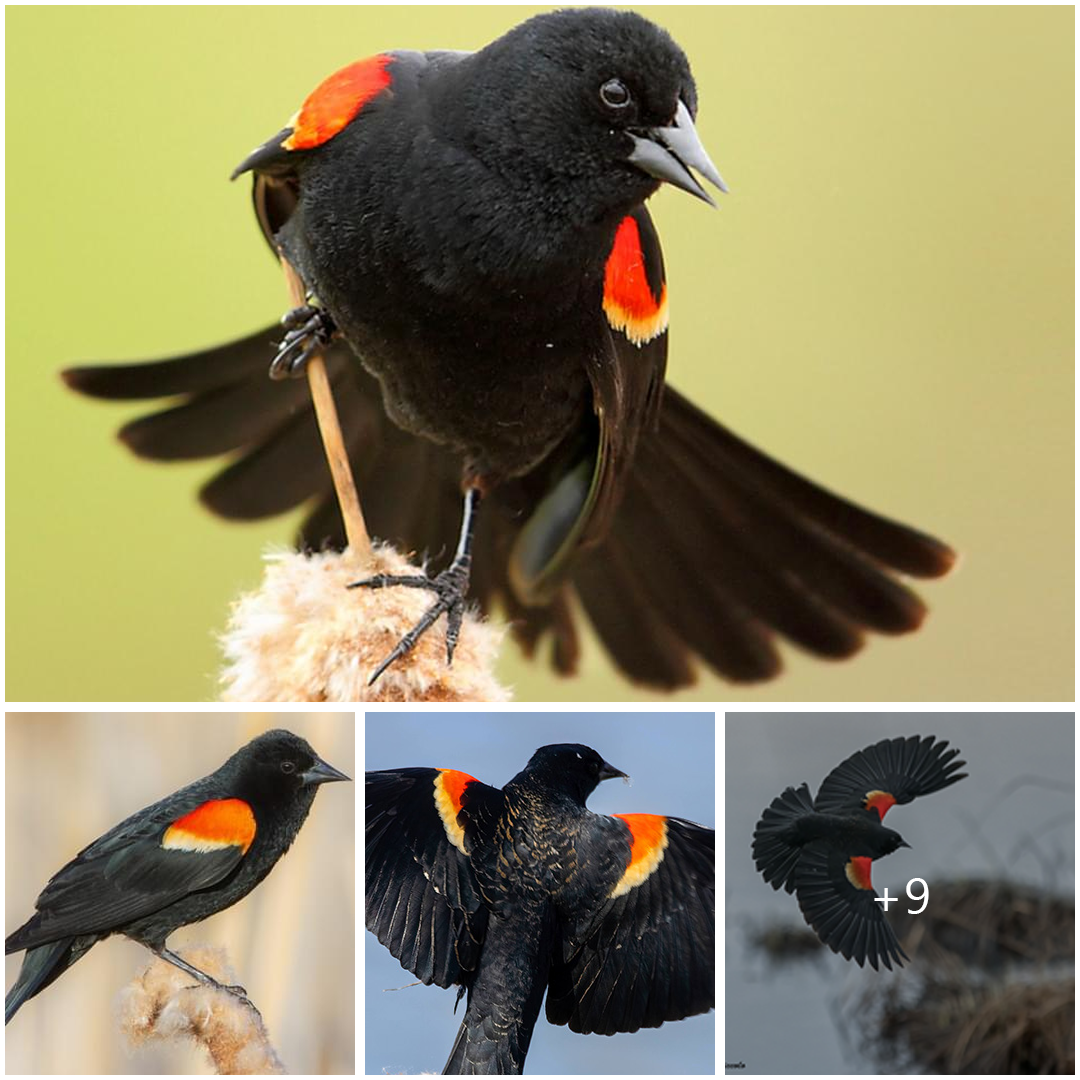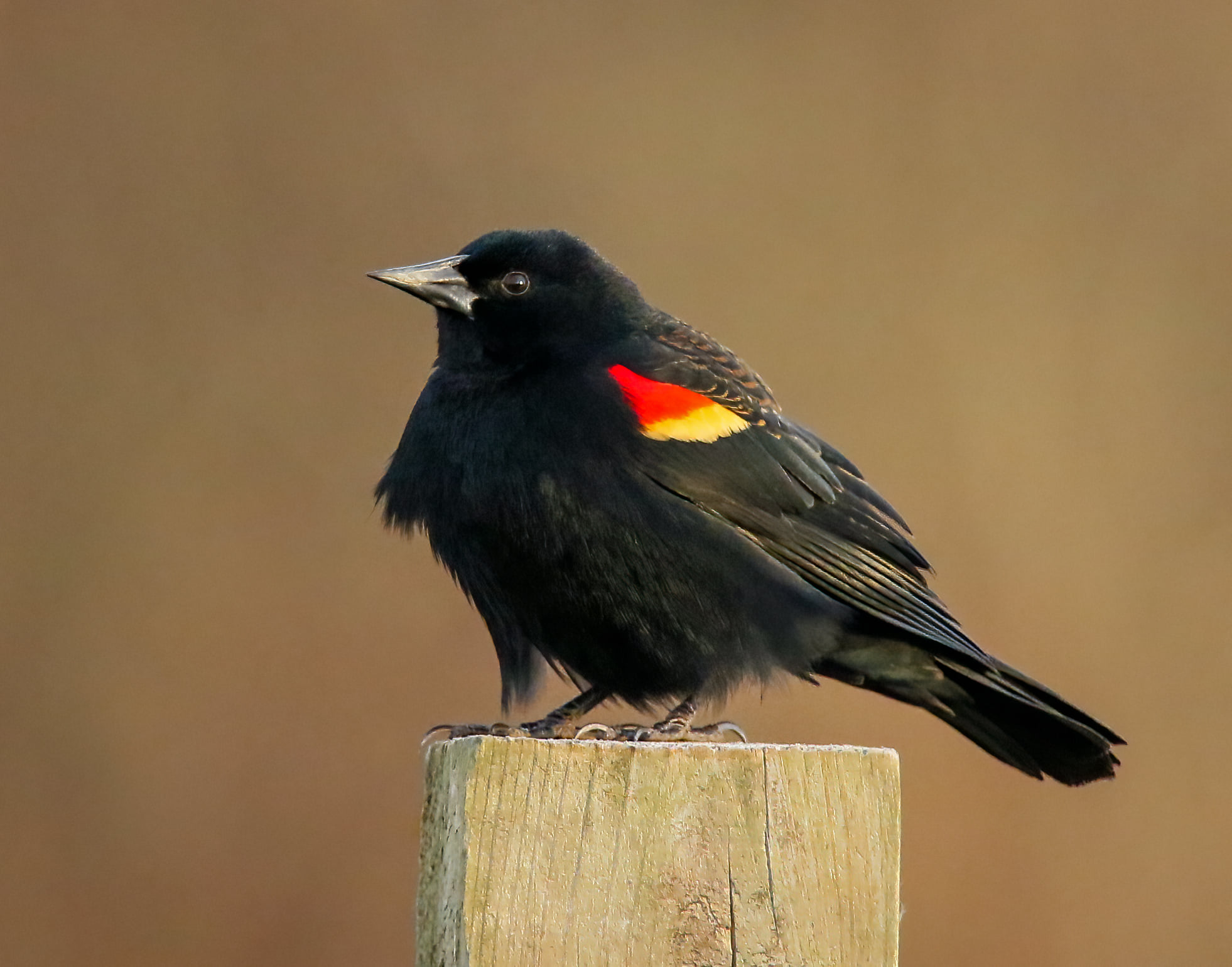
Exploring the Elegance of the Red-winged Blackbird: A Symbol of Wetlands and Wilderness
In the marshes, meadows, and wetlands of North America, a striking avian figure reigns supreme, its vibrant plumage and melodious calls capturing the hearts of birdwatchers and nature enthusiasts alike. Meet the Red-winged Blackbird (Agelaius phoeniceus), a charismatic species known for its bold appearance, captivating songs, and vital role in the ecosystem.
Physical Appearance: The Red-winged Blackbird is a medium-sized songbird characterized by its glossy black plumage and distinctive red and yellow shoulder patches, or epaulets, which lend it a regal and commanding presence. Females, on the other hand, display a more subdued brownish-black plumage with streaks of buff and white, providing camouflage amidst the dense vegetation of their habitat. Both sexes feature a slender bill and a long, tapered tail, perfectly adapted for navigating their marshland habitats with agility and grace.
Habitat and Distribution: Red-winged Blackbirds are widely distributed throughout North America, from southern Canada to Central America and the Caribbean. They are commonly found in a variety of wetland habitats, including marshes, swamps, meadows, and riparian areas, where they forage for food and build their nests amidst the dense vegetation. These adaptable birds are also known to inhabit agricultural fields, urban parks, and suburban areas, demonstrating their resilience and ability to thrive in diverse environments.

Behavior and Diet: As omnivorous opportunists, Red-winged Blackbirds have a varied diet that includes insects, seeds, grains, and small vertebrates. They are often seen foraging for food among the tall grasses and reeds of their wetland habitats, probing the soil with their slender bills or plucking insects from the air with agile precision. During the breeding season, males establish territories and engage in elaborate courtship displays, puffing out their chest feathers and flashing their colorful epaulets to attract mates and assert their dominance over rivals.
Vocalizations: One of the most distinctive features of the Red-winged Blackbird is its melodious and varied vocalizations. Males are particularly vocal during the breeding season, emitting a series of rich, flute-like calls and trills that echo across the marshlands. These songs serve multiple purposes, including attracting mates, defending territories, and communicating with other members of the flock. The cacophony of sounds produced by Red-winged Blackbirds adds to the ambiance of wetland habitats, enriching the auditory tapestry of the natural world.
Conservation Status: While Red-winged Blackbirds are currently listed as a species of least concern by the International Union for Conservation of Nature (IUCN), they face threats from habitat loss, pesticide exposure, and climate change. Conservation efforts aimed at preserving and restoring wetland habitats are crucial for ensuring the continued survival of these iconic songbirds, as they play a vital role in maintaining the ecological balance of their ecosystems.

Conclusion: In the mosaic of North America’s wetlands and wilderness, the Red-winged Blackbird stands as a symbol of resilience, adaptability, and natural beauty. With its bold appearance, captivating songs, and vital ecological role, this charismatic species enriches the landscape and captures the imagination of all who encounter it, reminding us of the importance of preserving and protecting the precious habitats that sustain life on Earth.





